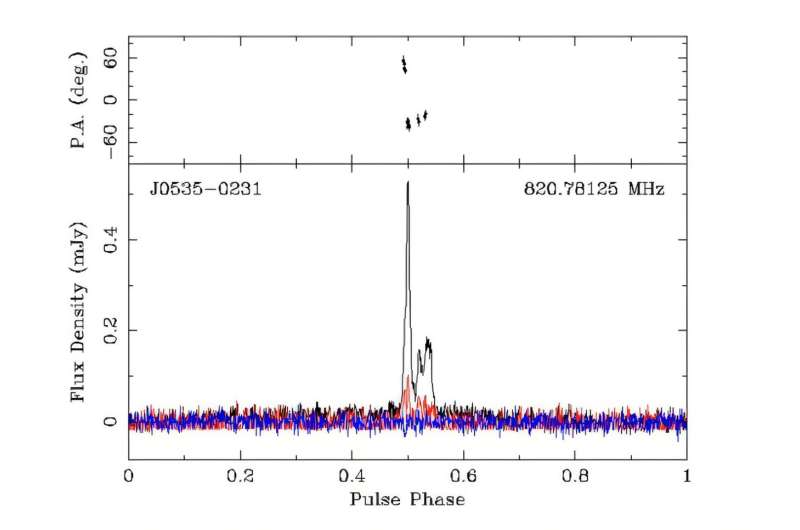Using the Green Bank Telescope (GBT), a team of astronomers has conducted follow-up observations on two pulsars identified by the Five-hundred-meter Aperture Spherical Radio Telescope (FAST). This study, presented on November 4, 2025, provides crucial insights into these pulsars, known as PSR J0535–0231 and PSR J1816–0518, enhancing our understanding of their fundamental properties.
The initial discoveries of these pulsars were made as part of the Commensal Radio Astronomy FasT Survey (CRAFTS), which has identified over 200 pulsars, including at least 74 millisecond pulsars and approximately 141 non-recycled pulsars. Due to the vast number of findings from CRAFTS, further investigations using large radio telescopes are essential to confirm and characterize these celestial objects.
Significant Observations and Findings
Led by Victoria A. Blackmon from West Virginia University, the research team focused on producing combined timing solutions for PSR J0535–0231 and PSR J1816–0518, utilizing data from both FAST and GBT. The observations revealed that PSR J0535–0231 has a spin period of 0.415 seconds, while PSR J1816–0518 has a spin period of 1.93 seconds.
The analysis determined key parameters for both pulsars. For PSR J0535–0231, the dispersion measure was calculated at 117.55 pc/cm³, with a rotation measure of 77 rad/m². Its spin-down luminosity was recorded at approximately 3.3 nonillion erg/s, indicating a characteristic age of around 1.1 billion years. The surface dipole magnetic field strength was estimated at 50 billion Gauss.
In contrast, PSR J1816–0518 exhibited a dispersion measure of 137.19 pc/cm³ and a rotation measure of about -0.21 rad/m². This pulsar has a characteristic age estimated at 2.6 million years, with a spin-down luminosity of around 63 nonillion erg/s and a surface dipole magnetic field strength of approximately 4.8 trillion Gauss.
Profile Evolution and Implications
The research also uncovered notable profile evolution with frequency for both pulsars. For PSR J0535–0231, researchers observed that the relative fluxes and linear polarizations of the trailing components increased with frequency. Conversely, PSR J1816–0518 exhibited minimal profile evolution, with its leading component showing slightly higher linear polarization and relative flux at higher frequencies compared to its trailing component.
Based on their findings, the team suggested that PSR J0535–0231 may be classified as a partially recycled pulsar, potentially representing a disrupted recycled pulsar (DRP), due to its isolated nature. This classification could have significant implications for understanding the lifecycle and evolution of pulsars.
This detailed follow-up study not only enhances our knowledge of these two pulsars but also highlights the importance of collaboration between major astronomical institutions to unravel the complexities of the universe. As the research progresses, further observations and analyses will continue to shed light on the enigmatic characteristics of pulsars discovered in the ongoing efforts of the CRAFTS initiative.
